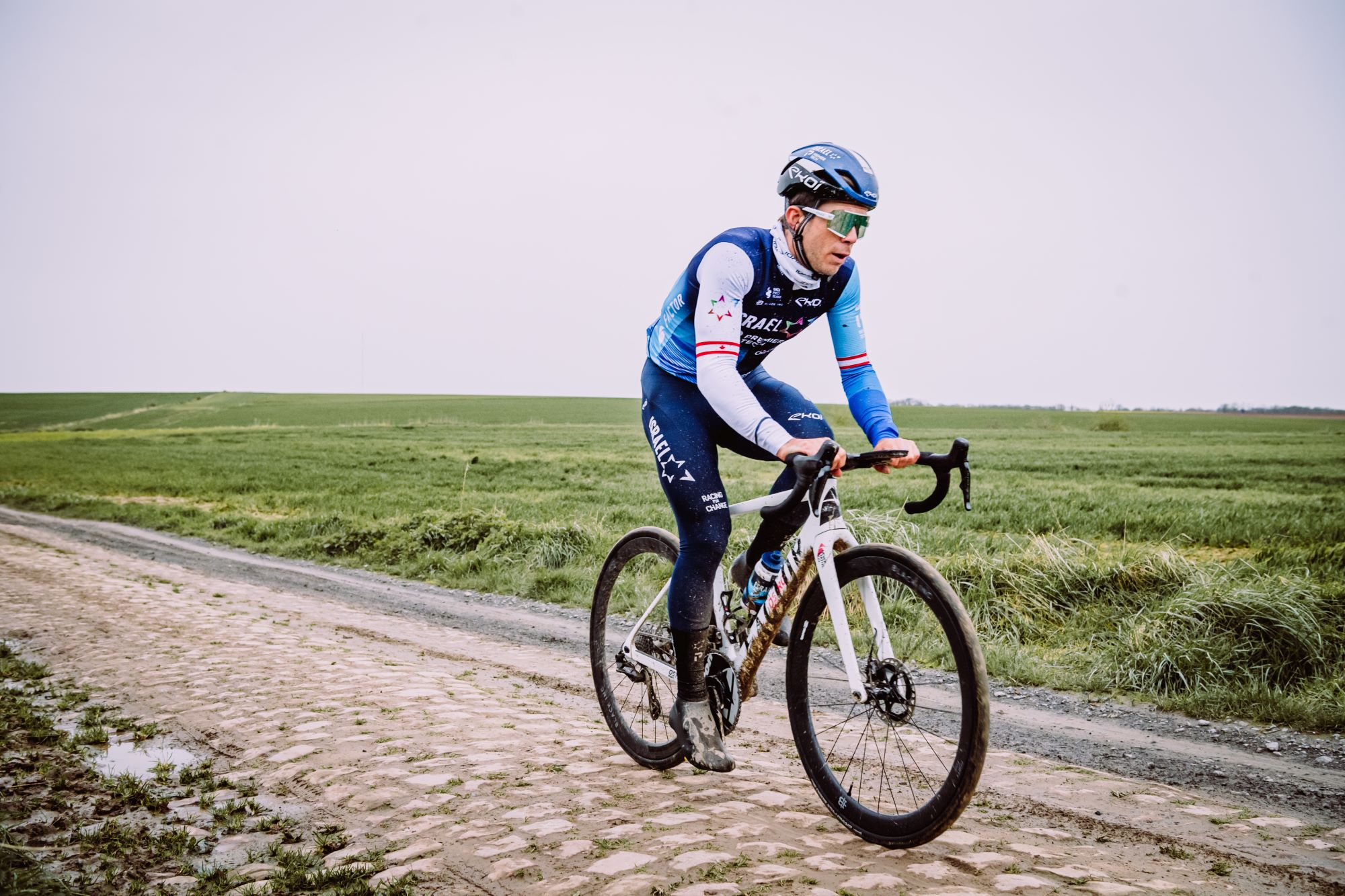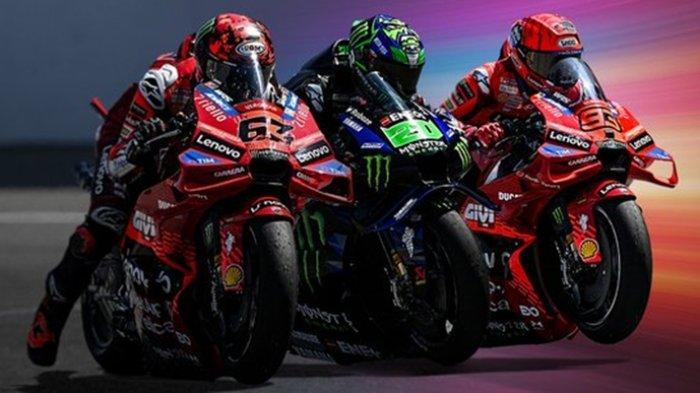Paris-Roubaix 2025 Tech Showcase: Gravel Bikes, Wide Tyres, And Practical Upgrades

Table of Contents
Gravel Bike Geometry and Frame Materials for Paris-Roubaix 2025
The evolution of gravel bike geometry is directly linked to the demands of races like Paris-Roubaix. No longer simply modified road bikes, modern gravel bikes are designed specifically to handle the unique challenges of cobblestone sectors. Frame materials play a critical role in achieving the desired balance of stiffness, comfort, and vibration damping.
- Increased Wheelbase for Stability: Longer wheelbases enhance stability at high speeds and over rough terrain, minimizing the risk of losing control on uneven surfaces. This is crucial for maintaining momentum and speed across the numerous cobblestone sections.
- Shorter Chainstays for Agility: Shorter chainstays improve agility and responsiveness, allowing for quicker adjustments in handling and navigating tight corners or sudden changes in terrain.
- Slacker Head Tube Angles for Improved Handling: A slacker head tube angle enhances stability and control, especially when navigating the demanding cobblestone sections at speed. This contributes to a more confident and controlled ride over rough terrain.
- Increased Tire Clearance: Modern gravel frames boast significantly increased tire clearance, allowing riders to fit wider tires with greater volume for improved comfort, grip, and puncture resistance. This is a significant upgrade that allows riders to take full advantage of wider tire technologies.
High-modulus carbon fiber remains the dominant frame material, offering a lightweight yet stiff platform with excellent vibration damping characteristics. Titanium, known for its exceptional ride quality and durability, remains a popular choice for riders seeking a more comfortable and resilient frame.
Wide Tyres: Grip, Comfort, and Rolling Resistance in Paris-Roubaix 2025
Tire technology is paramount in conquering the "Hell of the North." The choice of tire width and tread pattern directly impacts grip, comfort, and rolling resistance – a delicate balance that riders must carefully consider.
- Wider Tires for Increased Traction and Comfort: Wider tires significantly increase contact patch, providing greater traction on loose or uneven surfaces. This improves grip, stability, and comfort, reducing the impact of vibrations from the cobblestones.
- Specialized Tread Patterns for Optimal Grip on Cobblestones: Tire manufacturers are constantly innovating tread patterns specifically designed to maximize grip on cobblestones. These patterns often feature a combination of closely spaced knobs for traction and channels for mud clearance.
- Tubeless Setups for Reduced Risk of Punctures: Tubeless tire systems offer significantly reduced puncture risk, a crucial advantage on the notoriously puncture-prone cobblestones of Paris-Roubaix. The ability to run lower tire pressures without pinch flats is a game-changer.
- Innovative Tire Compounds for Improved Rolling Resistance: Advances in tire compounds are leading to tires that offer both excellent grip and reduced rolling resistance, allowing riders to maintain speed while navigating challenging sections.
Expect to see tire widths exceeding 35mm, possibly even reaching 40mm or more, becoming increasingly common among professional riders in 2025.
Practical Upgrades for Paris-Roubaix 2025: Drivetrain, Brakes, and Components
Beyond frame and tires, component upgrades significantly impact a rider's performance in Paris-Roubaix.
- Electronic Shifting for Precise and Reliable Gear Changes: Electronic shifting provides smooth, precise gear changes, crucial when navigating sudden changes in terrain and gradient. Its reliability is invaluable in the demanding conditions of Paris-Roubaix.
- Wider Gear Ranges for Tackling Steep Climbs and Challenging Sections: Wider gear ranges are essential for handling both the steep climbs and the intense efforts required to maintain speed on the flat, cobblestone sections.
- Powerful Disc Brakes for Enhanced Stopping Power: Disc brakes offer superior stopping power and control, especially crucial on wet or slick cobblestones where traditional rim brakes can be unreliable.
- Lightweight Components for Improved Performance: Lightweight components such as handlebars, stems, and saddles contribute to overall bike weight reduction, improving acceleration and climbing performance.
- Aerodynamic Enhancements for Speed Advantages: While aerodynamics might seem secondary on a course like Paris-Roubaix, even small aerodynamic gains can add up over the long distance. Integrated cable routing and aerodynamic wheels are becoming increasingly common.
These practical upgrades work synergistically to enhance rider control, efficiency, and comfort, maximizing their chances of success in the demanding race.
Data-Driven Insights and Rider Feedback: Shaping Paris-Roubaix 2025 Technology
Data analysis and rider feedback play a crucial role in shaping the technology used in Paris-Roubaix.
- Power Meter Data for Efficient Power Output: Power meters provide crucial data for optimizing training plans and pacing strategies during the race. Analyzing power output across different sections of the course helps riders fine-tune their efforts.
- GPS Tracking for Analyzing Ride Performance and Route Planning: GPS tracking allows for detailed analysis of rider performance, including speed, power, and heart rate, providing insights into areas for improvement.
- Feedback from Professional Riders for Continuous Improvement: The invaluable insights from professional riders, who experience the demands of Paris-Roubaix firsthand, are crucial in driving technological advancements.
- Collaboration between Manufacturers and Cycling Teams: Close collaboration between bike manufacturers and professional cycling teams ensures that the latest technology is continuously refined and optimized for the specific challenges of the race.
This collaborative approach is vital in refining and improving the technologies that ultimately dictate the success of riders in the grueling Paris-Roubaix.
Conclusion
The Paris-Roubaix 2025 Tech Showcase promises to be a captivating display of cutting-edge gravel bike technology. The focus on optimized gravel bike geometry, wider tires for superior grip and comfort, and practical upgrades in drivetrains, brakes, and components will significantly impact rider performance. The integration of data-driven insights and professional rider feedback is essential in continually refining these technologies. To stay updated on the latest innovations leading up to the Paris-Roubaix 2025, be sure to follow industry news, major cycling brands' websites, and relevant social media channels. The continuing evolution of technology in the quest to conquer the "Hell of the North" promises an exciting Paris-Roubaix 2025 Tech Showcase.

Featured Posts
-
 V Mware Costs To Skyrocket 1 050 At And Ts Concerns Over Broadcoms Price Hike
May 26, 2025
V Mware Costs To Skyrocket 1 050 At And Ts Concerns Over Broadcoms Price Hike
May 26, 2025 -
 Cara Menonton Live Streaming Moto Gp Inggris 2025 Sprint Race 20 00 Wib
May 26, 2025
Cara Menonton Live Streaming Moto Gp Inggris 2025 Sprint Race 20 00 Wib
May 26, 2025 -
 Jadwal Lengkap Moto Gp Inggris 2025 Hari Tanggal And Jam Tayang
May 26, 2025
Jadwal Lengkap Moto Gp Inggris 2025 Hari Tanggal And Jam Tayang
May 26, 2025 -
 Gaza Captives The Untold Stories Of Idf Soldiers
May 26, 2025
Gaza Captives The Untold Stories Of Idf Soldiers
May 26, 2025 -
 Southeast Pa Coastal Flood Advisory Issued For Wednesday
May 26, 2025
Southeast Pa Coastal Flood Advisory Issued For Wednesday
May 26, 2025
